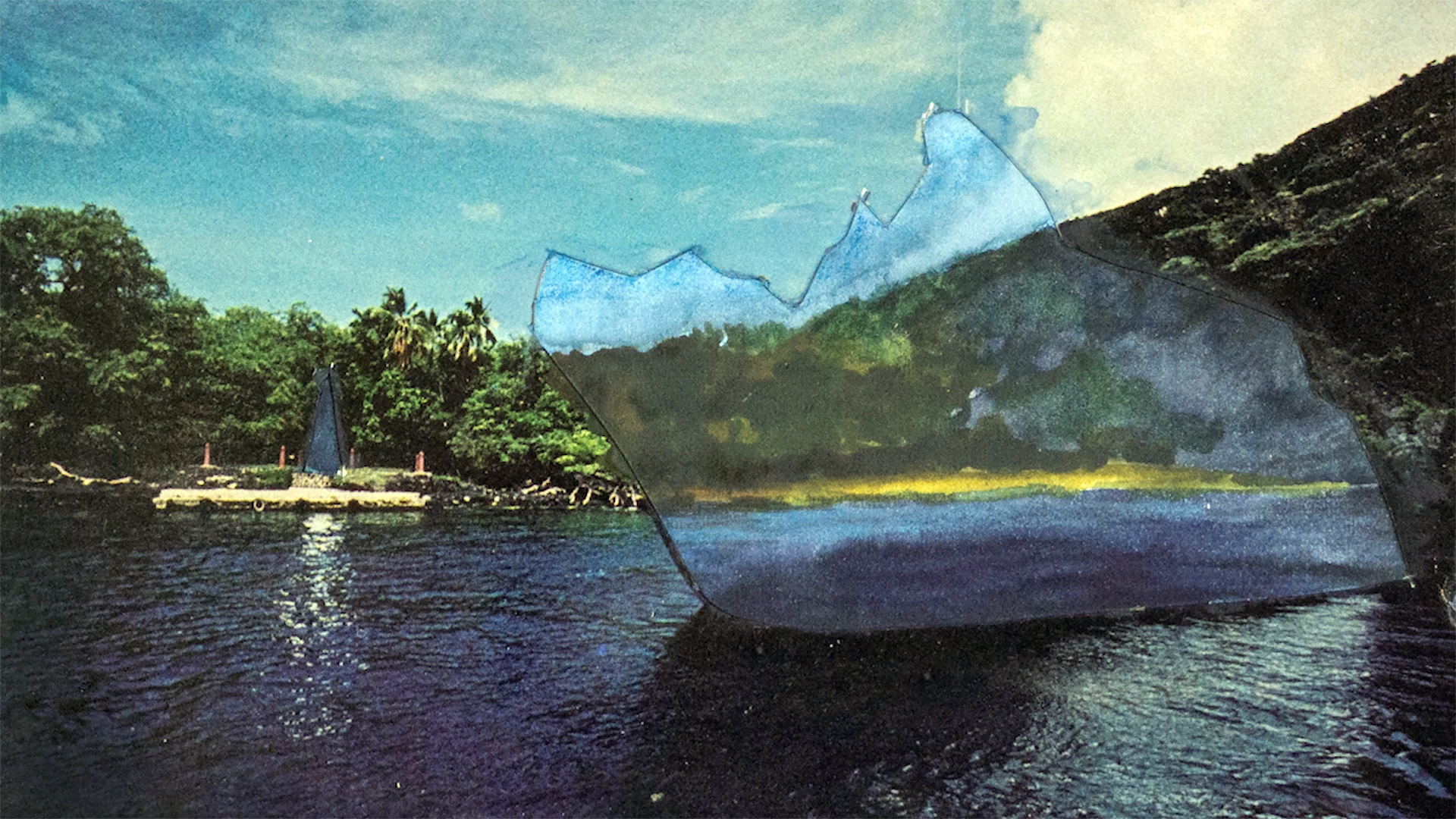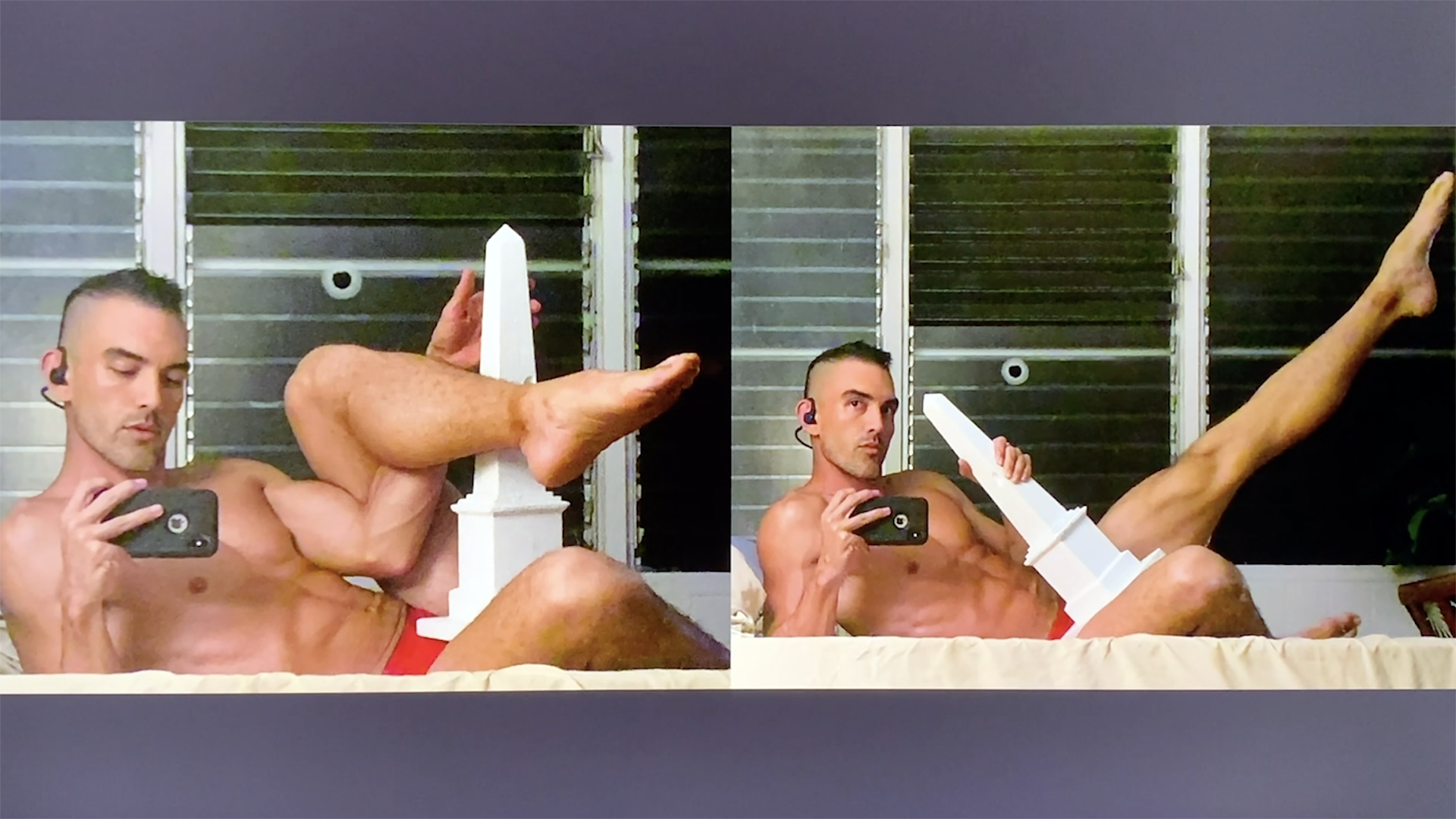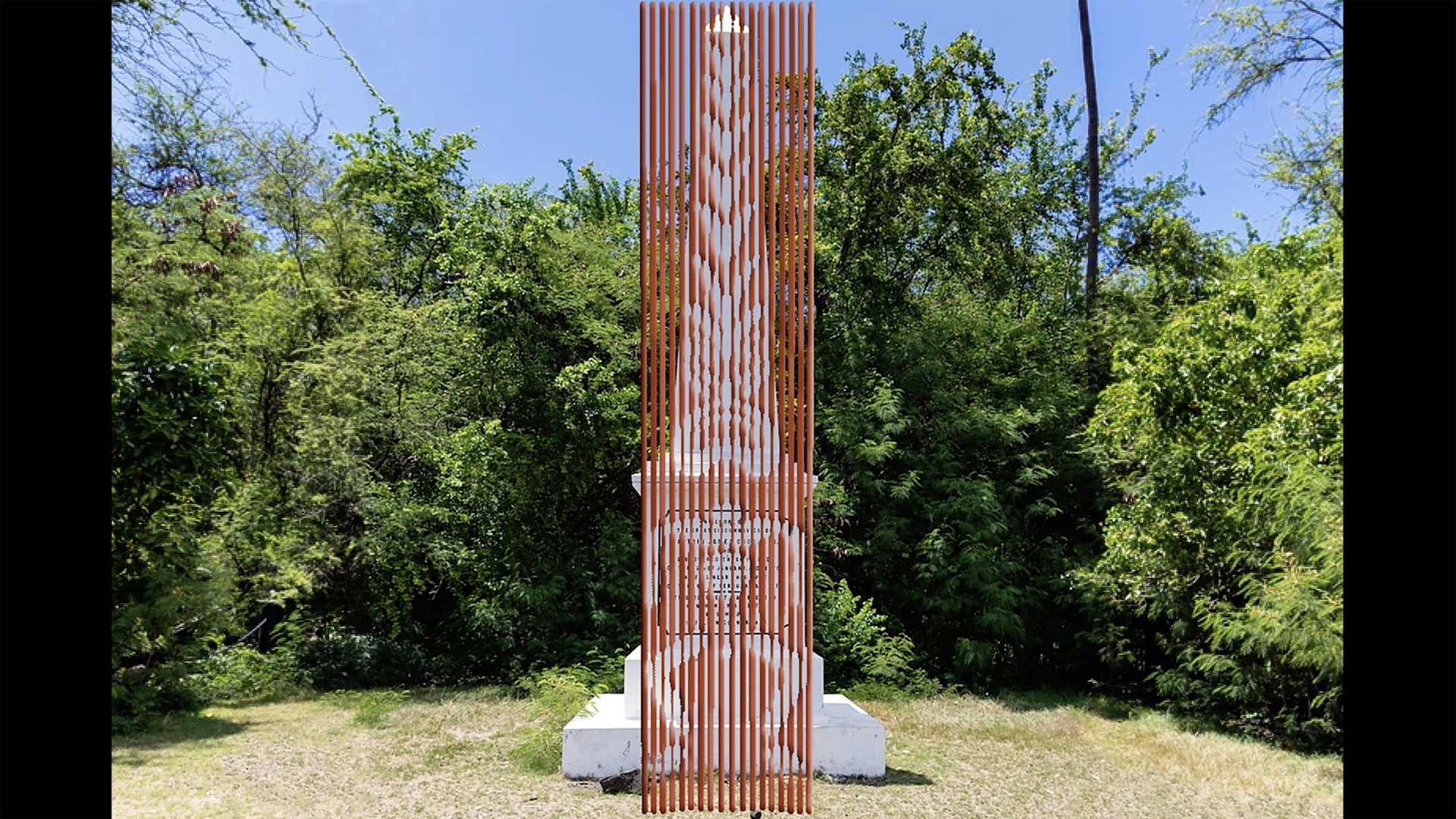
Video still, Lawrence Seward, unrealized proposal for Revisiting Kealakekua Bay, Reworking the Captain Cook Monument (2018–ongoing), 2020. Courtesy the artist and kekahi wahi (Sancia Miala Shiba Nash and Drew K. Broderick).
At Kaʻawaloa on the shore of Kealakekua Bay along the Kona coast of the island of Hawaiʻi, a 27-foot-high white obelisk commemorates British explorer Captain James Cook. Often credited with “discovering” the Hawaiian Islands, Cook was killed at Kaʻawaloa by Kānaka ʻŌiwi (Native Hawaiians) on February 14, 1779. According to many accounts, he met his end after attempting to kidnap Kalaniʻōpuʻu, ruling chief of Hawaiʻi. Nearly one hundred years after his death, Cook’s countrymen erected a monument in his honor in 1874. As a diplomatic gesture, Princess Likelike of the Kingdom of Hawaiʻi granted the small area of land supporting the structure to Her Britannic Majesty's Commissioner and Consul-General for the Kingdom in 1877.
Artist, curator, and educator Drew Kahuʻāina Broderick initiated Revisiting Kealakekua Bay, Reworking the Captain Cook Monument in August 2018, a year after white nationalists protested the planned removal of the Robert E. Lee monument in Charlottesville, Virginia. Amidst recent conversations about the need to redress commemorative spaces across the continental United States, the monument dedicated to Cook at Kaʻawaloa remained unquestioned. The obelisk’s inscription continues to ignore the acts of violence committed by the captain and his crew. Furthermore, those Kānaka ʻŌiwi who were killed in retaliation are not acknowledged nor are the names of the chiefs and spiritual advisors who negotiated peace in the aftermath.

Video still, Sean Connelly, unrealized proposal for Revisiting Kealakekua Bay, Reworking the Captain Cook Monument (2018–ongoing), 2020. Courtesy the artist and kekahi wahi.
Broderick’s multi-year engagement invites artists, architects, and cultural practitioners to revisit a storied place and rework a historical monument to center lesser known narratives of resistance in Hawaiʻi, reflect on legacies of scientific colonialism in the Pacific, and motion toward remediated futures already in the making. Participating in different stages of research and development are Bernice Akamine, Gaye Chan, Kaili Chun, Sean Connelly, Les Filter Feeders, Lawrence Seward, and Cory Kamehanaokalā Holt Taum. Over the course of 2023 and 2024, Revisiting, Reworking unfolds through ongoing conversations with collaborators, community gatherings, site visits, and unrealized interventionist proposals.
To broaden the potential impact of the project within the arts ecosystem of Hawaiʻi, Broderick is partnering with the not-for-profit Puʻuhonua Society. Founded by his grandmother and currently under the leadership of his sister, Puʻuhonua’s mission is to create meaningful opportunities for Kānaka ʻŌiwi and Hawai‘i-based artists and cultural practitioners. Tracing its history to 1972, the organization supports those who serve as translators/mediators/
amplifiers of social justice issues. Puʻuhonua means “place of refuge.”

Video still, Cory Kamehanaokalā Holt Taum, unrealized proposal for Revisiting Kealakekua Bay, Reworking the Captain Cook Monument (2018–ongoing), 2020. Courtesy the artist and kekahi wahi.